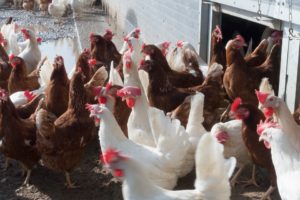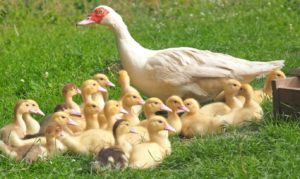Poultry Farming
 Chickens are a large part of our collective diet. Over 50 Billion chickens are raised every year, for both meat and eggs.
Chickens are a large part of our collective diet. Over 50 Billion chickens are raised every year, for both meat and eggs.
They can add an great layer to your garden’s ecosystem by moving plant material and insects up the food chain, and providing excellent manure in the process.
A varied diet is recommended, chickens will eat most excess plants or vegetables, grains, bread, or critters from a Vermiculture setup or worm farm.
The most popular barnyard birds can be highly efficient meat or egg producers. A broiler, for instance, proves its weight-gaining efficiency by yielding nearly a pound of meat for every two pounds of feed. Moreover, a good egg-laying hen’ll supply about a dozen eggs for every five pounds of feed. And certain dual-purpose breeds will actually give a fair supply of both products!
– Motherearthnews.com
Common poultry farmed for food are chickens, ducks, turkeys and geese. All are delicious, relatively low-impact, and inoffensive animals. With such variety available, one of the important considerations for urban farming is noise. Please consider your neighbours.
One of the biggest determinants of how much energy is used and greenhouse gasses created, in the production of livestock products (like chicken and other meats and dairy products), is how efficiently the animals convert feed into edible product, as feed represents the biggest source of these impacts. Chickens are the most efficient converters of feed into meat of all land-based livestock species. – Chicken.org.au
Free range farming
Under the right conditions, free range chickens will forage for themselves and require lesser amounts of feed.
If your garden is rather sterile without much natural growth, the chickens may not find much.
//under construction // fences 6ft or wing clip
Coop farming
keeps your chickens safe and manageable, but unless you have a mobile coop you are willing to move regularly, your chickens will not gain the benefits of natural foraging.
//under construction
Yarding
//under construction

